| Applications | |
Innovation in archaeological documentation methods
Archaeology reflects the amazing diversity of human life across the globe (Neto, 2000). Archaeological investigations are considered as a principal source of knowledge of prehistoric, ancient, and extinct cultures. In order to reconstruct history, archaeologists rely on all the unearthed evidence, such as man-made objects, which can be as small as tools and ornaments or as large as architectural residues (Xia, 2006). Thus, it is important to explore archaeological contrivance and record them in a systematic way. The notion of archaeological heritage includes structures, constructions, buildings, developed sites, moveable objects, monuments of other kinds as well as their context, whether situated on land or under water (Tantillo, 2007). Nevertheless, archaeology contrivance such as cultural heritage sites and artefacts are facing enormous threat and danger, such as air pollution, acid rain, flood and earthquake. Correspondingly, people nowadays are focusing on rapid development of a new and magnificent building yet neglecting about the existence of the most valuable inheritance left by the people from antiquity. Consequently, all of the above matter had caused constant destruction of cultural heritage sites and artefacts which may not be found by archaeologists. Thus, it is a vital for archaeologist to rapidly record all of the contrivance and finally create a user – friendly presentations of the recorded heritage sites and artefacts. In doing archaeological recording, archaeologists need to go to the field to carry out excavations on prehistoric and historic sites. They dig up cultural as well as biological remains from the soil left by people in the past (Xia, 2006). The process of excavation is carried out under a systematic circumstance whereby the heritage site is divided into grids and archaeologist will record the findings in each grid by sketching, drawing, capturing images and taking notes. When delineating site boundaries during investigations phase, shovel probes/tests should be excavated in a grid oriented along cardinal directions at < 20 meter intervals on sites less than 50 meters across, and at < 30 meter intervals for sites more than 50 meters across (Oregon Archaeology Guidelines, 2007). All the findings must undergo several processes before they can be published to the public. The conventional process comprises of measuring its relevance to other features on the site, identifying its geographical stratification, taking it to the lab for clean-up, cataloguing it, repairing it if necessary, drawing and photographing it, and describing it in words. Hence, conventional method of recording and documenting archaeology contrivance seems to be impractical due to time consuming, ineffective presentation and need a lot of manpower. A better system which can record, visualize 3D model and systematically manage the contrivances data is indeed an obligation. The available technologies and methodologies for digital recording of archaeological sites and objects are really promising and the whole heritage community is trying to adapt these approaches for fastest, detailed and easy 3 dimensional (3D) documentations (Campana and Remondino, 2009). In archaeological research it is essential to apply Geomatic techniques to represent correctly all peculiarities of the investigated objects (Campana et al., 2009). Remondino and El Hakim (2006) stated that the most common techniques used for 3D documentation, reconstruction and interpretation process are image-based and range – based data which can be acquired using photogrammetry and laser scanning approaches. The need of combining multiple techniques, like terrestrial laser scanning, photogrammetry and digital surveying comes from the complexity of some structures and by the lack of a single technique capable of giving satisfactory results in all measuring conditions (Gonzo et al., 2007). The role of geomatic in archaeology data collectionConventional method for archaeology data collectionCurrently, archaeology undergoes a rapid evolution due to the enthusiasm of archaeologist, researches and students to explore all the possible places which believed as an inheritance from antiquity. Thousands of heritage sites were found and millions of artefacts, bones, grave and facades were discovered. All of the contrivances are the factor that can declare the heritage site as a preservation region and protected by the law. In addition, the place will be visited by many people whether for studying purposes, researching or even for a holiday. As a consequence, the contrivances are exposed to a threat either from human exploration or natural disaster. The awareness of those threats has prompted archaeologist to record and document the contrivances via conventional way. In the conventional archaeological documentation method, archaeologists collect the data by using tools like optical survey instruments, measuring tapes, film cameras, pen, pencils, string, levels, hammers, trowels and ladders (Patel, 2009). Figure 1a shows the tools used by archaeologist in collecting data. In addition, to sketch the plan (Figure 1b) is really a time consuming process. Figure 1: (a) Conventional tools used in collecting and recording archaeology contrivances (Patel, 2009). (b) Field drawing and notes made by archaeologist (Patel, 2009) The definitions of an archaeological item and physical space were taken from the Centre for Intercultural Documentation (CIDOC) standard (Grabczewski et al., 2001). Most of the entities are familiar to a field archaeologist. A project may have many sites and each site must have a grid defined over its surface – like lines on graph paper. Each grid creates many squares or sectors comprising several points. Figure 2 illustrates the procedures used by archaeologist in the data collection and the procedure of documentation. Figure 2: Process conducted by archaeologist from marking the site until the documentation stage The quality of conventional recording very often depends on the qualification, interest or condition of the documenting archaeologist. There is no precise scale used during the drawing process and thus measurement cannot be directly conducted thorough the picture. As for that, again Geomatic plays the role in documenting the information systematically and in more practical way. Application of geomatic in archaeology data collectionIn archaeology the systematic and well-judged use of Geomatic techniques for documentation and digital conservation purposes is relatively a recent innovation, not yet applied on a regular basis for a variety of reasons; the perceived ‘high cost’ of 3D, the difficulties in achieving good 3D models, the difficulty of integrating 3D worlds with other 2D data and traditional documentations and the perception that 3D is only an additional ‘aesthetic’ factor (Campana et al., 2008). Nonetheless, as time goes by, various methods and algorithms were developed in order to overcome the limitation mentioned above. Among the Geomatic methods mentioned before, laser scanning technology is becoming increasingly popular recently as the scanning devices become more reliable, cheaper, faster and more portable (Fang et al., 2009). Into the bargain, laser scanning is capable of acquiring 3D data of the scan object and thus enables the production of precise 3D model. According to Yildiz et al. (2009), a 3D scanner is a device that analyzes object to collect data on its shape and possibly its appearance. Besides that, the acquired data can be used to construct digital 3D models which can be applied in various applications such as industrial design, orthotics, reverse engineering, quality control and documentation of cultural artefacts. As time goes by, laser scanning technology has been upgraded its performance in order to fulfil the needs of the market such as highly detailed 3D model and precise model that can be used for measurement purpose. As a result, laser scanning technology is divided into three major categories which are long range scanning, medium range scanning and close-range scanning. Examples for long range scanning is the airborne Light Detection and Ranging (LiDAR), while for medium range scanning is terrestrial laser scanning. By taking into consideration about the size of the objects, the distance between object and scanner, the surface of the object and the accuracy requirement, a suitable type of range scanner is chosen. Lambers and Remondino (2007) stated that there are three scales of archaeological research where Geomatic techniques and methodologies can be applied. Table 1 shows the detail on the scale of archaeological site and the suitable Geomatic tool to be implemented. Based on a research made by Moser et al. (2009), with a range from 2 to 200 meters the terrestrial Trimble Laser Scanner GX is qualified for the three dimensional documentation of the excavations. Furthermore, the research showed that at an average range of 5 meters from the scanner to the object, the accuracy is approximately ±3 millimetres. Instead of using medium range scanning, the research also used a close-range scanning intentionally for scanning the artefacts. As for accurate texturing purpose, additional images were captured using Nikon D200-10 megapixels. Close-range photogrammetry or laser scan recording, as proposed for the spatial data capturing process, differ from traditional methods, less complex recording and visualization techniques in that they provide metrically accurate data (Figure 3), (Miri and Varshosaz, 2005). Supported by Simon et al. (2009) in a research regarding the use of close-range 3D laser scanning in the development of virtual museum, close range laser scanning technology provides a variety of exceedingly precise and complex measurement tools than previously available with traditional measurements tools. Figure 3: A precisely pedestal model acquired using Photogrammetry method (Miri and Varshosaz, 2005) Instead of recording the contrivance, there was a research conducted with the aim of reconstructing the artefacts found during the excavation process. Close-range laser scanning was again used to scan the artefacts. This is due to the need for high level of detail and accuracy was one of the main criteria in the choice of the technology use, along with a limited amount of time to survey the archaeological artefact (Pires et al., 2006). All the pieces found during excavation were glued together and finally yield a shape like a pot but certain parts were not completed. Geomatic approach in archaeology is not just focusing on modelling the artefacts but it also plays an important role in modelling the heritage site and monument found. There is no single method that is applicable to record every subject of cultural heritage and hence there is a strong demand for a hybrid method that exploits several technologies, (Kadobayashi et al., 2004). The advantage of using laser scanning is that it can produce a very dense 3D point cloud data which is a crucial requirement for creating high-resolution geometric models (Figure 4b). Unfortunately, the colour information is sometimes lower than required. On the other hand, digital photogrammetry can produce high-resolution texture if the original images have sufficient pixels (Figure 4a). Thus, the integration of these two technologies is indeed a key to create high quality 3D recordings and presentations. Figure 4: The apse of a church in Byzantine Gemiler Island, Turkey (Kadobayashi et al., 2004) Case studyStudy Area: Lembah Bujang, Kedah, MalaysiaMalaysia is a country which has interesting and historical places that are well known throughout the world. In addition, several places such as the historic city centre of Melaka and Georgetown, Penang have been declared as UNESCO World Heritage Sites. Despite from the places that have been added into the list of UNESCO World Heritage Sites, a place located at the north of Malaysia stored plenty of impressive historical complexes which can elicit the wonderment feeling. The place is known as Lembah Bujang in Kedah. For the time being, it may not be as outstanding as the wonders of the world but it has its own attraction. Lembah Bujang is the site of Kedah’s ancient civilization, developed from the 4th to the 14th century AD which is during that period it is known as Katahanagara and ruled by Hindu-Buddhist kingdom (Norafida et al., 2003). Since the area is concentrated around Sungai Muda, it played an important role for economic importance and visited by all traders around the world such as from India and China. As a proof, there is Buddhist inscriptions discovered in Lembah Bujang. Until 2008, a local newspaper, News Straits Time stated that more than 80 heritage sites were found and the effort to find more ancient contrivance is still going on. Lembah Bujang is also claimed to be one of the earliest civilization in South East Asia. To date, lots of shrines are found in Lembah Bujang but none of them are digitally documented and promoted in the web via 3D technology in order to attract people around the world to visit them. Although technology is vastly spread, Malaysian is still using conventional way to document the historical contrivances such as by capturing images and taking notes. It is such a waste to let all the contrivances damage and what are left are just the images. As for this research, the study area considers only one site out of more than 80 sites that have been found. The biggest shrine found in Lembah Bujang which is Batu Pahat shrine (Figure 5) is chosen to be digitally documented using the state-of-the-art of Geomatic approach. i5: Batu Pahat shrine Proposed methodologyIn this study, the proposed technique to be applied is to use laser scanning technology together with photogrammetry approach. Figure 6 indicates the proposed methodology to be used in conducting this research. Basically, in archaeology site, there are two important things to be documented which artefacts are found during the excavation process and the monument. Specifically, for recording artefacts, there are two Geomatic methods used; photogrammetry and close-range laser scanning. In order to yield a quality 3D model of artefact, both methods need to be used because laser scanning will not give the best output once it scanned a black shiny surface. Hence, photogrammetry is used to overcome the problem yet improve the colour information of the artefact. For the purpose of recording monument, terrestrial laser scanning will be used as the size of the monument is quite big. Figure 6: Proposed method to be used for collecting archaeology data Archaeological contrivances are the proof to the world civilization and it should be shared with other people efficiently. The artefacts and monument will be presented in a 3D environment with the intention of increasing people’s interest. Finally, a digital 3D archaeology site can be shared in a digital manner or web-based due to overcome geographical constraint and to show that technologies and ancient thing can be combined and yield a tremendous contribution to the world. ConclusionRecent decades of archaeological research, conventional method was used to manually record and document all the contrivances. Prompt by the highly demand for faster and precise documentation of archaeological finds, archaeologist started to shift from using pencils and paper to digital 3D model and digital database for the heritage sites. Several researches have proved that the used of photogrammetry and laser scanning for archaeology data collection is a practical method compare to the previous method. Instead of giving 3D model as final output, it allows archaeologist to integrate the model with its spatial and attribute data in a system called archaeology database system. However, there are numerous of laser scanning systems, digital camera and database software. User need to know the size of the site, the cost for the project and accuracy required in order to ensure that the technique and method chosen are suitable. In addition, user needs to consider appropriate use of image-processing algorithms or integrating methodologies, to create realistic 3D models with good geometric details.
|




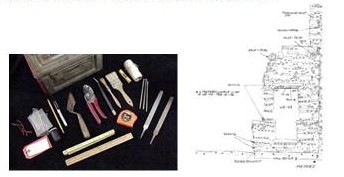
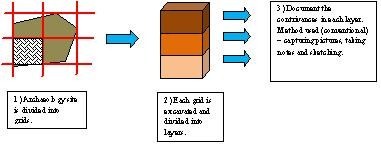
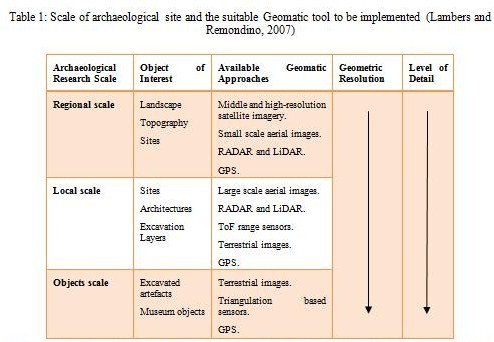
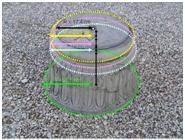
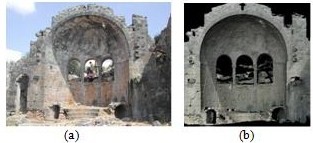
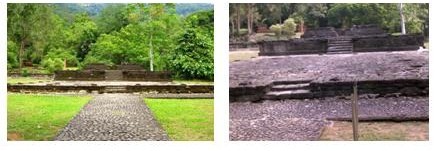
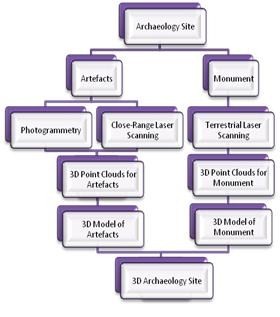












 (3 votes, average: 2.33 out of 5)
(3 votes, average: 2.33 out of 5)





Leave your response!